Newspoll: Coalition in election peril after hit in resources states
The Coalition has lost significant electoral ground across its traditionally strongest states — Western Australia and Queensland — and is facing collapse in South Australia.
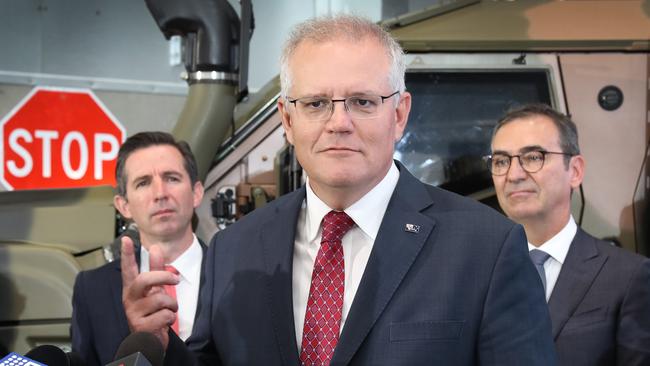
The Coalition has lost significant electoral ground across its traditionally strongest states of Western Australia and Queensland and is facing collapse in South Australia, amid a war of words with the premiers over the vaccine rollout and the aftermath of the sexual assault allegations that have rocked the federal government.
While the Coalition has managed to improve slightly in Victoria and remain relatively stable in NSW, demographic and state-based analysis of Newspoll data, suggests the Coalition would need to restore support in the resource states to retain government.
The analysis has also revealed that the Coalition has suffered a flight of male voters rather than female over the past three months despite the Liberal Party’s perceived failures in dealing with the mistreatment of women in politics.
Averaged approval ratings for Scott Morrison since late last year show the Prime Minister remains at historical highs, almost double his rival Anthony Albanese, and is the preferred prime minister by a substantial margin across all mainland states.
The quarterly analysis of four Newspolls conducted this year suggests there is likely a correlation of factors driving dissatisfaction with the federal government, a strengthening of the Labor brand outside NSW and Victoria and an almost universal fall in support for the two minor parties.
With enough marginal seats on the pendulum in Queensland and Western Australia to decide an election outcome, the analysis shows the federal Coalition would need to regain territory in both states, where popular Labor premiers have led strong border lockdowns for the past year.
On a two-party-preferred basis, the Coalition now trails Labor 49-51 per cent averaged over the past four Newspolls compared with a lead of 51-49 in the December analysis, which covered polls from late August to the end of November.
The loss of support for the Coalition federally is most profound in Western Australia, confirming that the state Liberal Party’s disastrous defeat to Labor leader Mark McGowan at the March state election, when the Liberal Party was reduced to just two seats in the 59-seat Legislative Assembly, had had an impact on support for the Morrison government.
The federal Labor vote surged from 32 per cent in the December analysis to 42 per cent in the latest quarterly analysis, while the Coalition dropped from 43 per cent to 40 per cent. This produced a 12-percentage-point turnaround in the two-party-preferred vote from 53-47 in the Coalition’s favour in December to favour Labor 53-47 now.
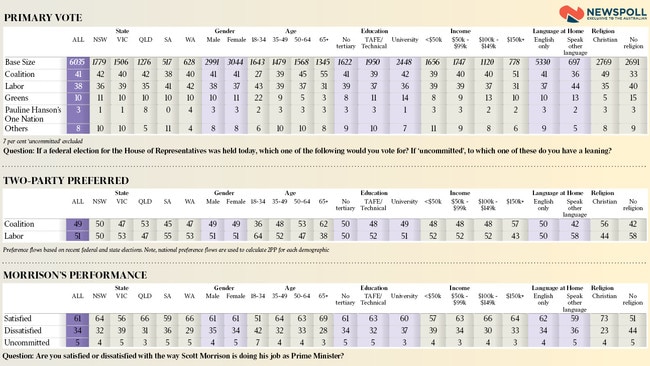
This was despite Anthony Albanese recording just a 21 per cent approval rating in Western Australia, his lowest of any state.
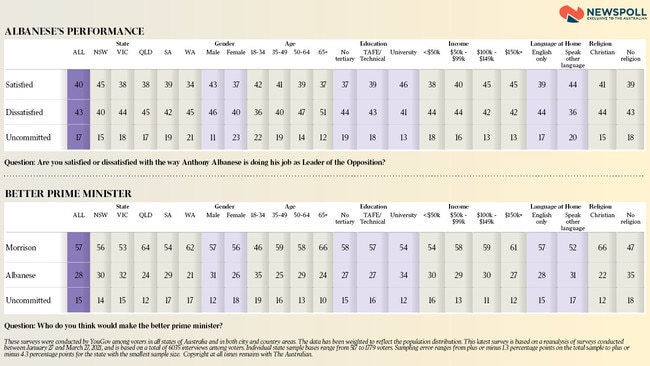
Based on a uniform swing of more than 8.5 per cent since the 2019 election, the Liberals would be defeated in three seats — Swan, Pearce and Hasluck — on top of losing Stirling, which is slated for abolition under an electoral redistribution announced last month.
The shift in the two-party-preferred vote appears to have been aided by a collapse in support for One Nation from 7 per cent at the 2019 federal election to 4 per cent.
In Queensland, Labor’s averaged primary vote rose from 29 per cent in the December analysis to 35 per cent in the latest survey while the Coalition dropped from 45 per cent to 42 per cent resulting in an eight point turnaround in the two-party-preferred vote with the LNP ahead 53-47, down from 57-43 in December.
Although the statewide swing since the last election, about 5.5 per cent, is smaller than in WA, the Liberal National Party would face the loss of four seats in Queensland: Longman, Leichhardt, Dickson and Brisbane.
The only improvement for the Coalition in the two-party-preferred vote was in Victoria where Labor’s lead of 55-45 in the December analysis fell to 53-47. The Coalition improved a point on primary vote to 40 per cent against Labor’s unchanged 39 per cent, while there was a large fall in support for the Greens from 14 per cent to 10 per cent.
The worst state for the federal Coalition is now South Australia, where Liberal Premier Steven Marshall is tipped to lose the state election due early next year. The Coalition’s primary support fell six points to 38 per cent and federal Labor’s vote rose five points to 41 per cent. The opposition now leads 55-45 on a two-party-preferred split. Liberal-held Boothby, on a margin of just 1.4 per cent, would almost certainly be lost if an election were held now.
In NSW, the Coalition dropped two points to a primary vote of 42 per cent with Labor flat at 36 per cent, producing a deadlocked 50-50 two-party-preferred vote.
The federal Coalition will go into the next election with a notional minority of 75 seats out of 151, following the defection of Liberal MP Craig Kelly and the likely loss of Stirling in the electoral redistribution.
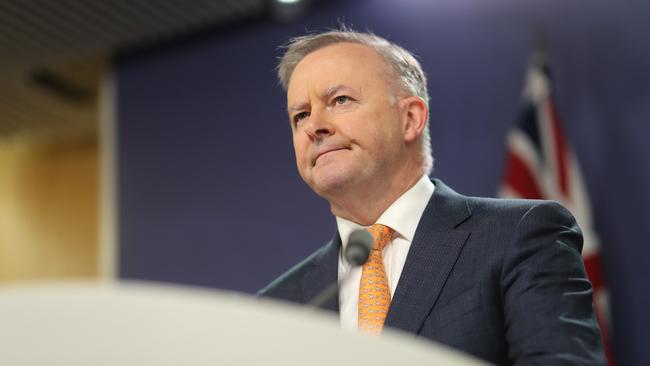
Mr Morrison’s approval ratings remain only slightly down when averaged across the past three months compared with the end of last year, falling from 65 per cent to 61 per cent. His dissatisfaction rating rose from 31 per cent to 34 per cent. In other terms, his net satisfaction rating has fallen from plus 34 per cent to plus 27 per cent. The largest falls in Mr Morrison’s approval ratings were in South Australia and Victoria.
Approval for Mr Albanese fell in overall terms from neutral territory in December to a net negative rating of minus three for the first three months of this year.
Mr Morrison’s lead as preferred prime minister also improved on average, despite significant falls in the previous Newspoll survey in late March. He rose a point to 58 per cent while Mr Albanese remained on 28 per cent, with little change in those who remained undecided.
With the government having suffered almost two months of political damage over its response to the mistreatment of women in parliament and the twin sexual assault allegations, Coalition strategists were bracing for a loss of support among women voters.
However, the Newspoll analysis shows the Coalition has lost ground with male voters over the past three months, with no loss of female support when averaged over the quarterly polling period.
The male primary vote fell from 44 per cent in December to 41 per cent. Female voters remained stable at 41 per cent.
The demographic breakdown showed that the largest swing toward Labor based on income levels was among middle income earners, with those at the lower and higher ends of the spectrum remaining stable in their support for either party.
Support among voters in households with incomes between $50,000 and $99,000 swung three points to Labor — to 39 per cent — and three points against the Coalition to 40 per cent. Similarly, those with household incomes of between $100,000 and $149,000 rose three points in favour of Labor to 37 per cent while the Coalition lost points to 40 per cent among this key demographic.
The analysis also showed a fall in support across the minor parties. The Greens fell in every state other than NSW and SA, dropping four points to 10 per cent in Victoria and three points in WA to 10 per cent. The minor party also fell two points in Queensland to 10 per cent. Pauline Hanson’s One Nation also fell a point in Queensland to 8 per cent, with its largest fall in WA where it was reduced from 7 per cent to 4 per cent.
The analysis was based on an aggregate of the past four Newspolls conducted over the first quarter of 2021 based on a sample size of 6035 interviews. Smaller sample sizes in South Australia and Western Australia resulted in a larger margin of error in those states of plus or minus 4.3 per cent.




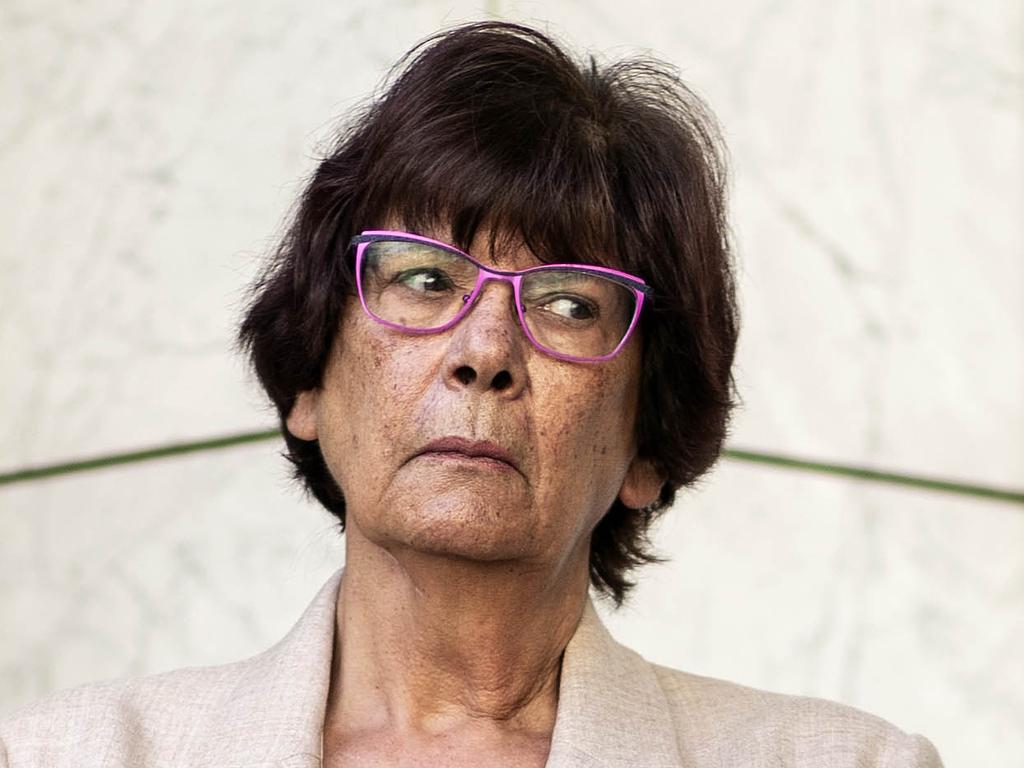
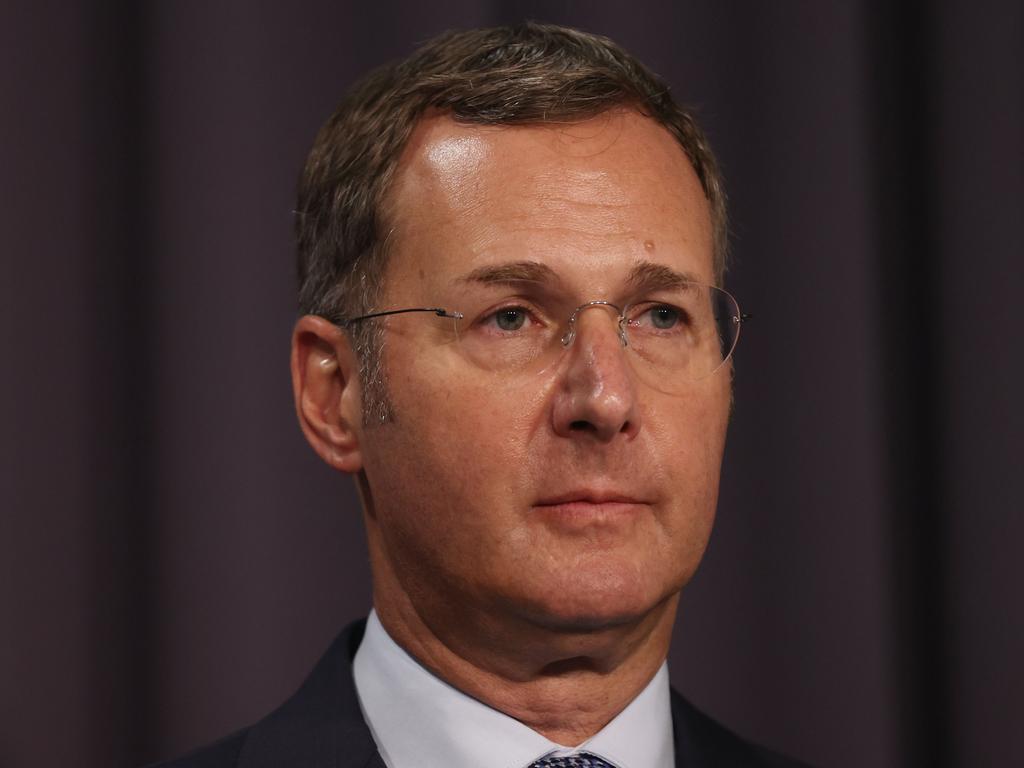


To join the conversation, please log in. Don't have an account? Register
Join the conversation, you are commenting as Logout